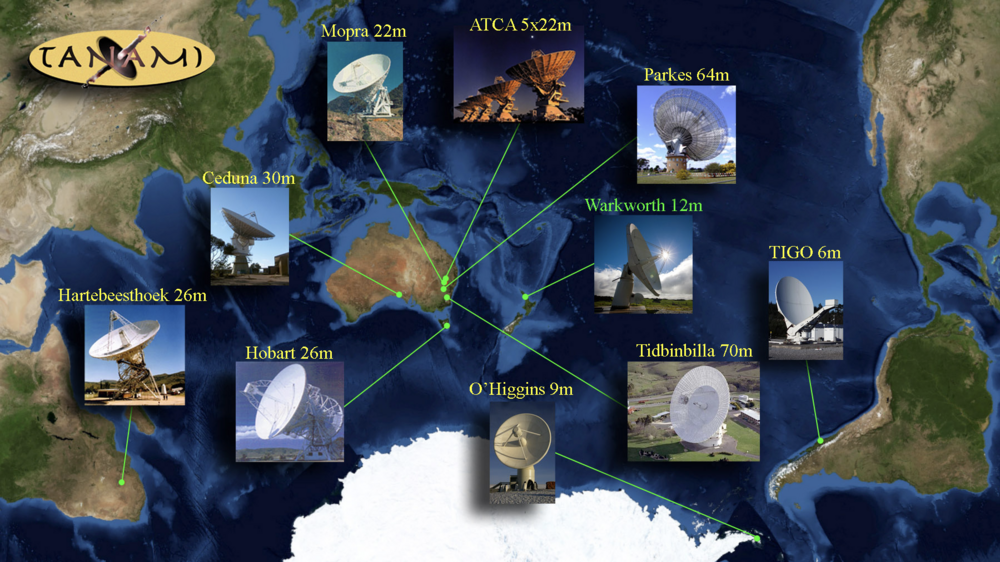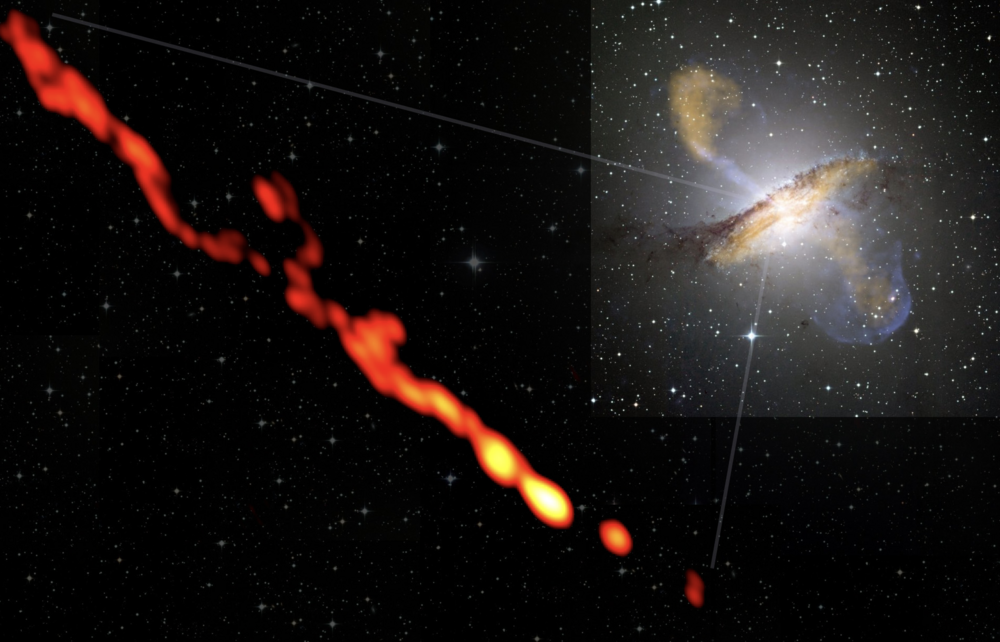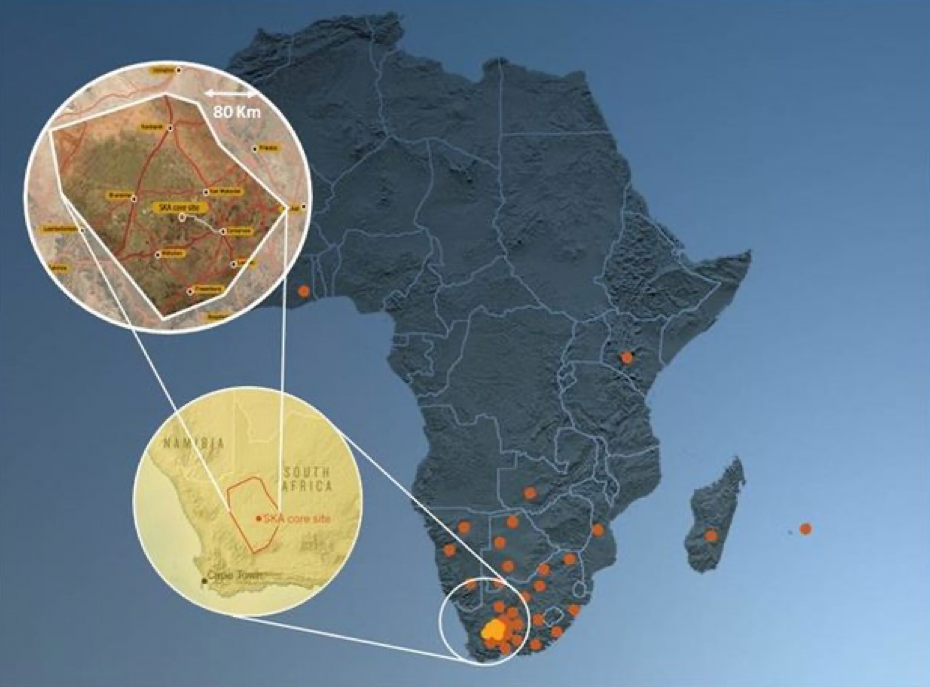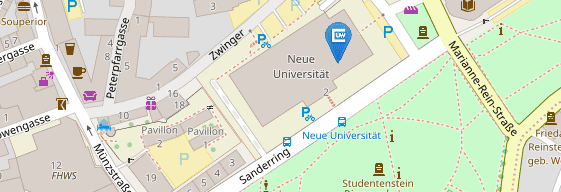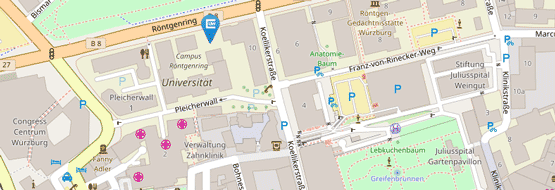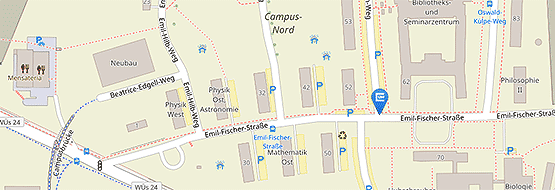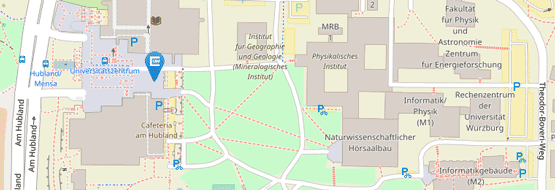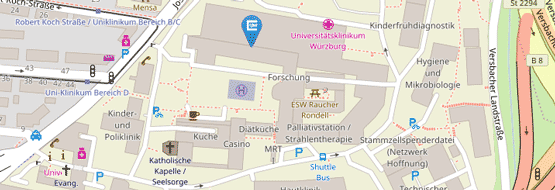Radio Astronomy in Africa
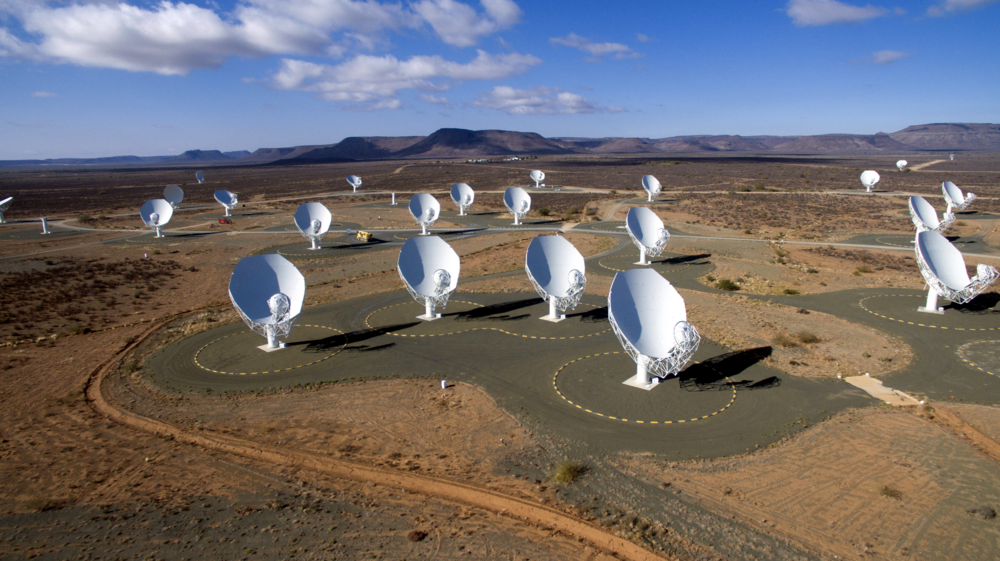
With the Square Kilometer Array (SKA), the world's future largest radio telescope is currently under construction. To be more precise, it consists of two networks of many antennas and individual telescopes: one is located in Australia and is intended to detect the longest-wave radio radiation with wavelengths of around one meter and longer. The other will measure medium wavelengths down to the centimeter range, is being set up in South Africa and should be fully operational in the so-called SKA1 phase in the early 2030s.
Together with African and global partner groups, the Chair of Astronomy at JMU is involved in preparatory projects such as the MeerKAT array, which is already the world's most powerful radio telescope in this wavelength range. In addition, the Chair uses African radio telescopes in conjunction with global networks in the so-called Very Long Baseline Interferometry (VLBI).
VLBI observations of active galaxies
In the TANAMI project, which is led by Prof. Dr. Matthias Kadler at the Chair of Astronomy, structural and brightness changes of relativistic jets in active galaxies in the southern sky have been monitored and studied since 2007. A network of radio telescopes in Australia and other telescopes in the southern hemisphere are used for this purpose. The image information on the smallest angular scales (the image sharpness) is provided by the telescopes that are furthest away from the Australian main array. This is how the sharpest images to date of our nearest radio galaxy, Centaurus A, were obtained.
Improved VLBI networks
The TANAMI image quality is currently limited by the fact that only one telescope in South Africa (Hartebeesthoek) is VLBI-capable. As part of a BMBF-funded joint research project, JMU researchers are working on integrating further South African telescopes into the VLBI network. A first step is to be taken by developing a VLBI mode for the SKA prototype telescope SKA-MPI, which is operated by the Max Planck Society. In further steps, the 64 individual telescopes of the MeerKAT array, operated by the South African Radio Astronomical Observatory (SARAO), are to be interconnected and made VLBI-capable. Further telescopes are also to be integrated into such global networks in other African countries as part of the African VLBI Network (AVN) project.
The future: The SKA
On 1 November 2024, Germany joined the Square Kilometer Array Observatory (SKAO) organization as its twelfth member. In future, the SKA-mid (the South African SKA component) will be by far the most sensitive and powerful telescope array in the world in this wavelength range. Like MeerKAT, the SKA core array will be located in the South African Radio-Quiet Zone in the Karoo region of the arid Northern Cape province, where interference to radio astronomical measurements from man-made artificial radio radiation can be minimized.
Contact
Prof. Dr. Matthias Kadler is Professor of Astrophysics at the Chair of Astronomy at JMU. His research group is primarily concerned with high-energy processes in the vicinity of supermassive black holes and uses observations with radio telescopes in Africa and other countries in the Earth's southern hemisphere.
Reserach Group of Prof. Dr. Matthias Kadler
Prof. Dr. Karl Mannheim holds the Chair of Astronomy at JMU. His research group is dedicated to the observation and modeling of high-energy radiation in active galaxies. He is a founding member of the Association for Data Intensive Radio Astronomy (VDR).
Research Group of Prof. Dr. Karl Mannheim


